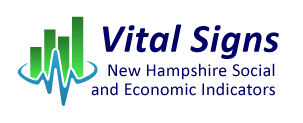Alternative Measures of Labor Underutilization
(print version ![]() )
)
The U.S. annual average unemployment rate was 8.1 percent in the year 2012. But what is the “real” unemployment rate? An answer to this question will only be forthcoming when an official definition of the “real” unemployment rate is developed. Until that time comes, the alternative measures of labor underutilization can be used to address concerns that the official unemployment rate is not providing a true picture of unemployment.
The alternative measures of labor underutilization were developed to help better describe the relationship between the working-age population and those who are not working or are not working as much as they would like to be working. There are six measures of labor underutilization, which are based on results of the Current Population Survey. These measures are designated as U-1 through U-6. The measure that uses the same criteria as the official unemployment rate is designated as U-3. Measures U-1 and U-2 are more restrictive than the U-3, while measures U-4 through U-6 are more inclusive.
Those persons counted as unemployed must be willing and available to work, and must be actively looking for work. An exception to this rule is that those who are laid off with a specific call back date are not required to be actively seeking work. The alternative measures include separate estimates of two subgroups of persons meeting the official definition of “unemployed.” The U-1 measures the percentage of the labor force that has been unemployed for fifteen weeks or longer. This measure provides an indication of the time and effort that will be required by those seeking employment. The U-2 is a measure of job losers and those who completed temporary jobs. Increasing rates of this measure imply ongoing business contractions and production streamlining.

In addition to those who are included in the official measure of unemployment, the U-4 measure counts those persons who have not looked for a job within the last month due to discouragement about their employment prospects. Increasing numbers of discouraged workers are often thought to indicate a very weak job market. But more importantly, discouragement reflects a real or perceived mismatch between the skills of job seekers and the skills required for current job openings. The U-5 measure includes an additional group of persons who have not actively searched for work within the last month. These individuals have not looked for work due to a temporary situation, such as illness or transportation problems.
The U-6 is the most commonly quoted figure when the “real” unemployment rate is discussed. The broadest measure of labor underutilization, it includes all those who meet the official definition of unemployed, plus those who want a job but have not looked for one in the past month, plus those who are working part-time but want full-time work. Referred to as part-time for economic reasons, these persons either work a full-time job for which the hours have been reduced to less than 35 per week, or work a part-time job because they have been unable to find a full-time job. An increasing difference between the U-6 and other measures may indicate that employers are attempting to be more streamlined and flexible, without losing good employees.
Robert Cote

![]() Adobe Acrobat Reader format. You can download a free reader from Adobe.
Adobe Acrobat Reader format. You can download a free reader from Adobe.
Translation Resources and Disclaimer
New Hampshire Employment Security (NHES)
45 South Fruit Street | Concord NH 03301 | 603-224-3311 | 1-800-852-3400
TDD Access: Relay NH 1-800-735-2964





